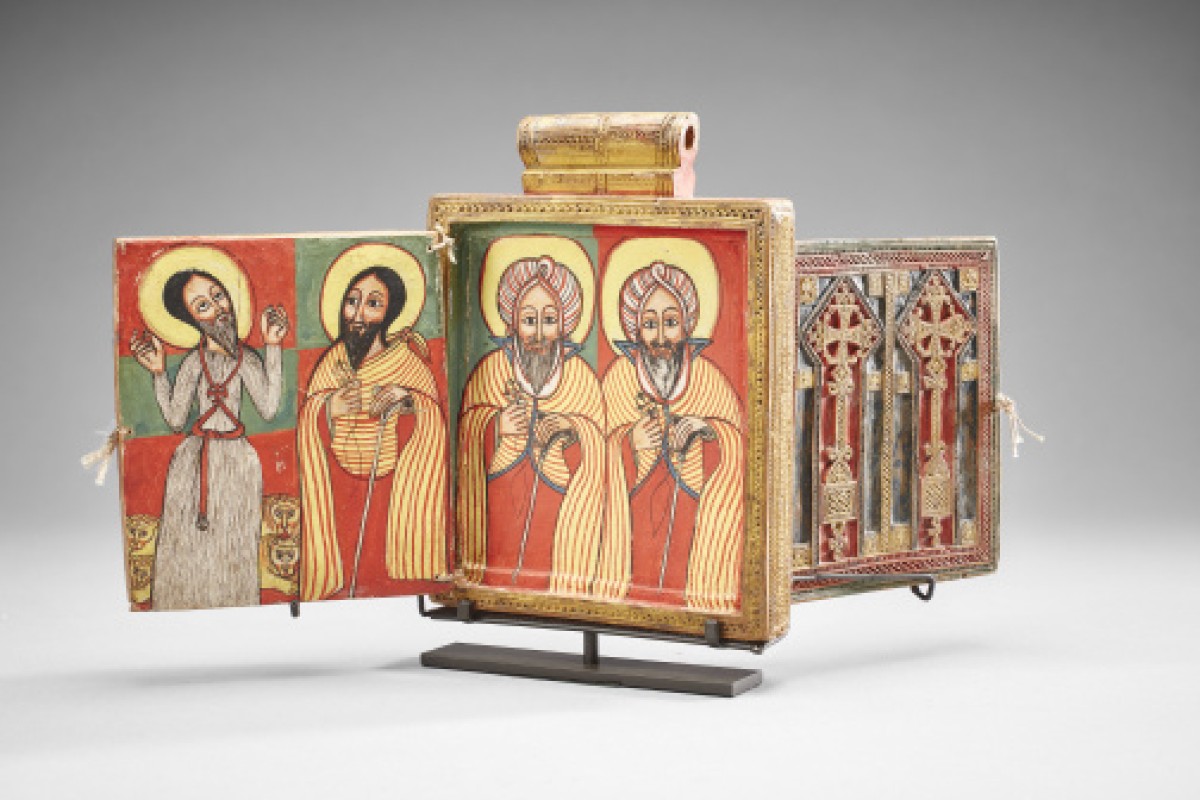A spotlight on Ethiopian art
Step back in time with Ethiopian Art, 1400–1900, on view now.

Have you ever looked at historical objects and imagined how they were viewed in their past life? We think about it all the time. Especially with the artworks from the Middle Ages that are part of Ethiopian Art, 1400–1900: A Living Culture on view now on Level 1 in the Thomson Collection of European Art.
Ethiopia’s
As you walk through the gallery space, you’ll see hand crosses, manuscripts, scrolls and icons that illustrate the story of Ethiopia’s religious rise.
During their time of origin, pieces like Hand Cross, 15th century, which has careful latticework and near-perfect symmetry, and the intricately carved designs and bold imagery of the object Diptych: St. George and the Dragon, and Virgin and Child with Saints would have held great religious
The University of California, Davis’s Professor of English Literature, Seeta Changanti and The Metropolitan Museum of Art, New York’s Assistant Curator of Medieval Art, Andrea Myers Achi talk about these two unique pieces and explain their symbolism.
Are you an AGOinsider yet? If not, sign up to have stories like these delivered straight to your inbox every week.

